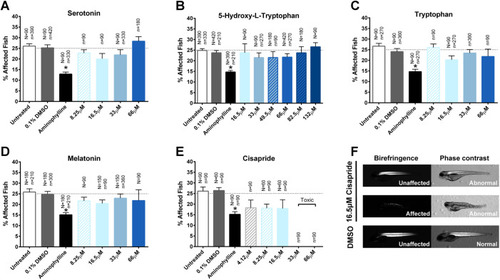- Title
-
Effect of serotonin modulation on dystrophin-deficient zebrafish
- Authors
- Spinazzola, J.M., Lambert, M.R., Gibbs, D.E., Conner, J.R., Krikorian, G.L., Pareek, P., Rago, C., Kunkel, L.M.
- Source
- Full text @ Biol. Open
|
PHENOTYPE:
|
|
PHENOTYPE:
|
|
|
|
|
|
|





